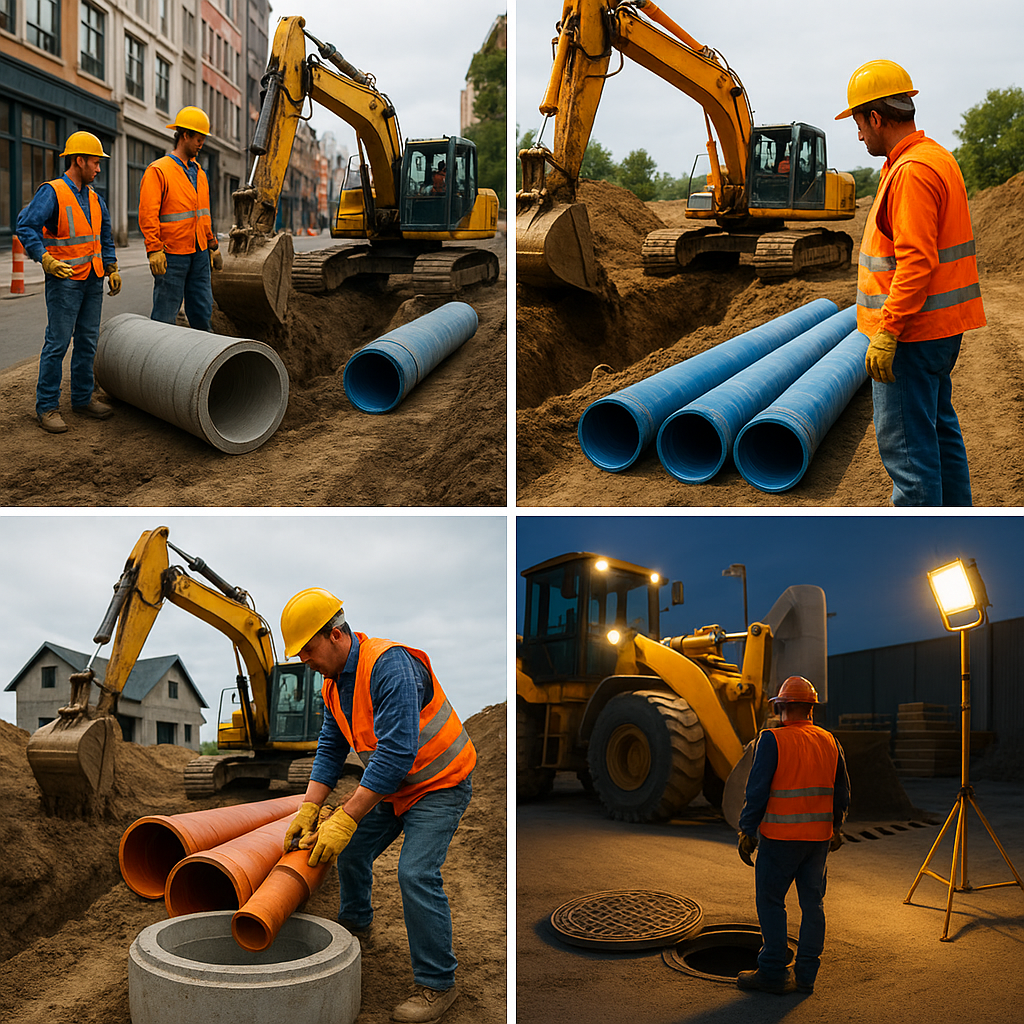Revolutionizing Sewer Inspections: 2024 Technology Trends
Explore 2024's sewer inspection tech trends, from AI to robotics, enhancing accuracy, safety, and efficiency in plumbing infrastructure.

Revolutionizing Sewer Inspections: 2024 Technology Trends
Introduction
The sewer inspection industry is undergoing a transformative shift with the integration of cutting-edge technologies. As we move into 2024, advancements in robotics, artificial intelligence (AI), and digital integration are setting new standards for accuracy, safety, and operational efficiency. This article delves into the latest trends and technologies shaping the future of sewer inspection.
New Technologies and Equipment
Robotic and Autonomous Systems
Robotics are at the forefront of modern sewer inspection technologies. Crawler robots and small, agile robots equipped with 3D mapping capabilities are now commonplace. These systems navigate complex sewer networks, accessing areas previously unreachable by human inspectors.
- Crawler Robots: Designed for long-distance inspections, these robots are equipped with cameras and sensors to provide detailed pipe assessments.
- Agile Robots: Smaller and more flexible, these robots can maneuver through narrow pipes, making them ideal for urban sewer systems.
High-Definition CCTV Cameras
CCTV technology has evolved significantly, with high-definition cameras now featuring pan-and-tilt functions. This enhancement allows for clearer, more comprehensive views of pipe interiors, facilitating precise defect identification.
AI-Powered Software
AI is revolutionizing defect detection in sewer inspections. AI-powered software can identify cracks, blockages, and corrosion in real-time, significantly reducing human error and increasing precision.
- Real-Time Analysis: AI software analyzes footage as it is captured, providing immediate insights.
- Automated Reporting: Defects are logged automatically, streamlining the reporting process and ensuring accuracy.
Integration of GIS and Predictive Analytics
Geographical Information Systems (GIS) and predictive analytics are becoming essential tools in sewer inspection. By forecasting pipe deterioration, these technologies enable optimized maintenance planning, reducing the likelihood of unexpected failures.
Industry Regulations and Standards
Compliance with industry regulations is critical for sewer inspection businesses. Enhanced digital record-keeping and automated reporting ensure transparency and adherence to EPA and local environmental regulations.
- Open Data Standards: Emerging data standards facilitate interoperability between different software platforms, aiding national benchmarking efforts.
Market Trends and Business Opportunities
Urbanization and Aging Infrastructure
The growing urban population coupled with aging infrastructure is driving demand for advanced, non-invasive inspection methods. These methods help reduce operational costs and minimize environmental impact.
Smart Plumbing Systems
The residential market is seeing a rise in smart plumbing systems and water-efficient technologies, which complement advances in sewer inspection by promoting sustainability and resource conservation.
Safety Protocols and Best Practices
Remote Inspection Technologies
Remote technologies, including robots, drones, and cameras, significantly reduce worker exposure to hazardous environments, such as confined sewer spaces and toxic gases.
- Portable Gas Detectors: Enhance on-site safety by detecting dangerous gases before personnel enter pipes.
- Real-Time Video Monitoring: Provides live feeds from inspection sites, allowing for immediate intervention if necessary.
Digital Safety Logs
Maintaining digital safety logs and adhering to strict safety standards help lower accident risks and ensure regulatory compliance.
Recent Case Studies and Success Stories
Municipalities adopting AI-assisted inspections have reported significant improvements in productivity and cost savings. By preventing unnecessary repairs and enabling timely interventions, these technologies enhance public health and infrastructure longevity.
Cost and Pricing Information
While initial investments in AI and robotic inspection tools can be high, the long-term savings are substantial. Reduced labor costs, fewer emergency repairs, and optimized maintenance schedules justify the expenditure.
- Smart Plumbing and Fixtures: Investments in water-efficient fixtures contribute to lower utility bills and compliance costs, benefiting homeowners and businesses alike.
Conclusion
The future of sewer inspection is increasingly data-driven, precise, and focused on proactive infrastructure management. By embracing these technological advancements, the industry is poised for sustainable growth and enhanced urban infrastructure resilience.
Practical Tips
- Invest in Training: Ensure your team is well-trained in the latest technologies and safety protocols.
- Adopt AI Solutions: Integrate AI-powered software to streamline defect detection and reporting.
- Utilize Predictive Analytics: Employ GIS and predictive analytics for effective maintenance planning.